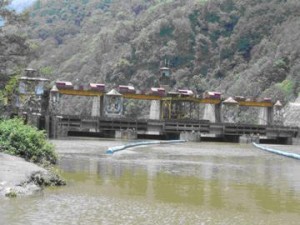‘Bhutan Hydel plants not cause of erosion in India’
New Delhi, February 25, 2009: Rejecting the allegations from the Assam government and local newspapers, the government of India said flood in Assam is not because of the hydro power projects in Bhutan.
There were some press reports in Assam during 2007 that the Hydropower Projects in Bhutan are causing floods in the region.
In his written reply to Rajya Sabha on Tuesday, Minister of State for Water Resources Jai Prakash Narayan Yadav said the issue was discussed with the concerned Bhutanese authorities during the second meeting of Joint Group of Experts on Flood Management between India and Bhutan after Assam raise the issue with union government.
Following such discussions, it has been found that the Hydropower Projects in Bhutan are not directly responsible for the floods/erosion in Assam, he said.
In July 2006, an agreement was signed between India and Bhutan on cooperation in Hydropower sector by which India agreed to import 5000 MW of hydropower from Bhutan by 2020. The target was raised to 10,000 MW during the visit of Indian Prime Minister Man Mohan Singh to Bhutan in May 2008.
In July 2007, India and Bhutan signed an agreement to implement the 1095 MW Punatsangchu-1 Hydroelectric Project. Earlier in 1994, an Inter-Government Agreement between GoI and RGoB was signed on the Tala and Kurichu Hydroelectric Projects for loan repayment and tariff fixation.
India said, in order to formulate the flood forecasts on transboarder rivers originating from Bhutan, a scheme “Comprehensive Scheme for Establishment of Hydro-meteorological and Flood Forecasting Network on rivers common to India and Bhutan” is in operation. The network consists of 35 hydro-meteorological/meteorological stations located in Bhutan and is being maintained by Bhutan with funding from India. The data received from these stations are utilized in India by the Central Water Commission for formulating flood forecasts.
The major rivers entering into India from Bhutan are Sankosh, Manas, Jaldhaka, Torsa, Wangchu , Gaurang, Pagladiya, Beki and Dhansiri.

